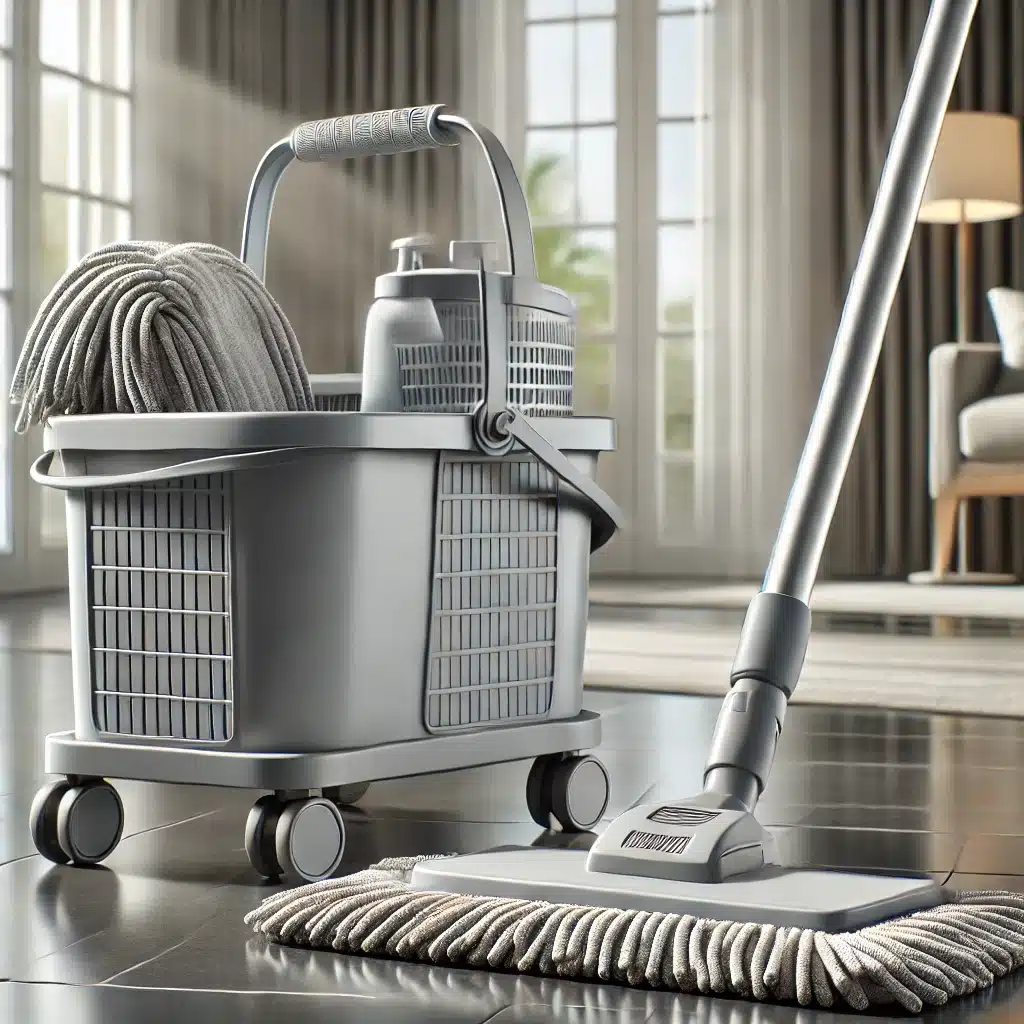Finding the right housekeeper can make a world of difference in maintaining a clean and organized home. But with so many options out there, how do you find the perfect match? Follow these six steps to ensure you hire the ideal housekeeper for your needs.
1. Define Your Needs and Expectations
Before you embark on your search for the perfect housekeeper, it’s crucial to clearly define your needs and expectations. The first step is to determine how frequently you require cleaning services. Are you looking for a housekeeper to clean your home on a weekly, bi-weekly, or monthly basis? This decision will depend on the size of your home, your lifestyle, and how quickly your space tends to get messy. Some households may need a housekeeper for frequent upkeep, while others might only need occasional deep cleaning.
Next, consider the type of cleaning services you need. Do you require deep cleaning, where the housekeeper will tackle more intensive tasks like scrubbing bathroom tiles, cleaning the inside of appliances, and washing windows? Or are you looking for general tidying up, which includes tasks like dusting, vacuuming, and wiping down surfaces? It’s important to be specific about these needs to ensure the housekeeper understands what is expected.
To make your expectations clear, create a detailed list of the tasks you expect the housekeeper to perform. This list might include dusting furniture, vacuuming carpets, mopping floors, doing laundry, ironing clothes, cleaning bathrooms, washing dishes, and taking out the trash. Think about any additional tasks that might be unique to your home, such as watering plants or organizing closets. The more detailed your list, the better equipped the housekeeper will be to meet your needs.
Consider any special requirements you might have. For instance, if you have pets, make sure to mention this to potential housekeepers, as they need to be comfortable working around animals and may need to perform pet-related tasks like cleaning litter boxes or dealing with pet hair. If anyone in your household has allergies, you might need the housekeeper to use specific cleaning products that are hypoallergenic or fragrance-free.
Understanding and clearly defining your needs and expectations upfront is vital. It not only helps in finding a housekeeper who can fulfill your requirements but also sets the stage for a smooth and successful working relationship. When both parties have a clear understanding of the duties and expectations, it minimizes the chances of misunderstandings and ensures that your home is maintained exactly how you want it.

2. Set a Budget
When it comes to hiring a housekeeper, one of the most important steps is setting a budget. Housekeeping services can vary widely in cost, influenced by factors such as the frequency of visits and the extent of cleaning required. By determining your budget beforehand, you can narrow down your options and focus on finding a housekeeper who fits within your financial parameters.
Start by assessing how often you need a housekeeper to visit your home. More frequent visits, such as weekly or bi-weekly, will typically cost more than monthly or occasional deep cleaning sessions. Consider your household’s needs and lifestyle when deciding on the frequency of service. Additionally, think about the level of cleaning you require. Basic tidying up will be less expensive than comprehensive deep cleaning services that include more labor-intensive tasks.
Once you have a clear idea of how often you need a housekeeper and the type of cleaning required, you can set a realistic budget. While it might be tempting to choose the cheapest option available, it’s essential to remember that you often get what you pay for. Opting for a budget housekeeper may save you money in the short term, but it can lead to inconsistent or subpar cleaning. Investing in a reliable and thorough housekeeper, even if it means paying a bit more, can save you time and stress in the long run. A good housekeeper will consistently meet your expectations, ensuring that your home is well-maintained and that you don’t have to spend extra time fixing any issues yourself.
When setting your budget, also consider any additional costs that might arise. For example, some housekeepers may charge extra for specific tasks like laundry, ironing, or using special cleaning products. Make sure to ask about these potential additional costs during your initial discussions to avoid any surprises later on.
To get a sense of what is reasonable to pay, you can research the going rates for housekeeping services in your area. Look at local listings, ask friends or neighbors for recommendations, and check online reviews. This will give you a better understanding of the market rate and help you set a budget that is both realistic and competitive.

3. Ask for Recommendations
Start by reaching out to people within your immediate circle. If a friend or relative has been using a housekeeper they are happy with, they can provide detailed feedback on their experiences. This includes how well the housekeeper cleans, how punctual and dependable they are, and whether they are easy to communicate with. Such information is invaluable and can help you make an informed decision.
In cases where you might be new to an area or if you don’t know anyone who currently uses housekeeping services, turning to online reviews can be a helpful alternative. Platforms like Yelp and Google are excellent resources for finding housekeepers and reading reviews from other clients. These reviews often contain detailed accounts of customers’ experiences, highlighting both the positives and any potential issues. Look for housekeepers with consistently high ratings and read through several reviews to get a balanced perspective.
Social media platforms and community forums can also be great places to ask for recommendations. Many neighborhoods have local groups on Facebook or other social networks where residents share services and experiences. Posting a request for housekeeper recommendations in these groups can yield multiple suggestions from people in your area who have direct experience with local service providers.
4. Conduct Interviews
By preparing a set of questions that will help you understand the candidate’s experience and approach to housekeeping. Asking about their tenure in the field, such as “How long have you been a housekeeper?” provides insight into their level of experience. This information can help you assess whether they have the expertise needed to handle your cleaning requirements.
Inquire about the types of cleaning products they use. This is particularly important if you have preferences or restrictions regarding certain chemicals or eco-friendly products. For example, asking “What types of cleaning products do you use?” ensures that their cleaning methods align with your household’s needs, especially if there are allergies or sensitivities to consider.
Pets are another significant consideration. If you have animals in your home, it’s essential to know whether the housekeeper is comfortable working around them. A question like “Are you comfortable with pets?” will clarify this aspect and help prevent any potential issues later on.
References from previous clients are invaluable when evaluating a housekeeper’s reliability and quality of work. Asking “Can you provide references from previous clients?” allows you to follow up and verify their claims. Speaking with past clients can give you a clearer picture of the housekeeper’s work ethic, punctuality, and overall performance.
The interview is also the perfect opportunity to discuss your specific needs and expectations in detail. Clearly outline the tasks you require, the frequency of cleaning, and any particular areas of concern within your home. This ensures that the housekeeper understands your expectations and can commit to meeting them. It also provides a chance for the housekeeper to ask questions and express any preferences or concerns they might have regarding the job.
5. Check References and Backgrounds
Before finalizing your decision, it’s imperative to thoroughly check the housekeeper’s references and background. This step ensures that you are hiring someone trustworthy and reliable to take care of your home. Start by reaching out to their previous employers. Speaking directly with past clients can provide valuable insights into the housekeeper’s work history, reliability, and overall performance. Previous employers can share their experiences, highlighting the housekeeper’s strengths and any potential areas of concern.
In addition to contacting references, consider conducting a background check. This is especially important to ensure the safety and security of your home and family. A background check can reveal any red flags that might not be evident from interviews and references alone. It’s a crucial step in confirming the housekeeper’s credibility and trustworthiness. Many professional cleaning services already conduct background checks as part of their hiring process, so if you are hiring through an agency, this step might be taken care of. However, if you are hiring an independent housekeeper, arranging for a background check yourself is advisable.
Ensuring that your housekeeper has a clean background and a history of reliability will give you peace of mind. You want to be confident that the person you are entrusting with your home can be trusted to work unsupervised and handle your possessions with care. This due diligence is a small investment of time that can prevent potential issues and help you feel more comfortable with your choice.

6. Start with a Trial Period
Even when a housekeeper comes highly recommended, it’s wise to begin with a trial period to assess their performance. This initial phase allows you and the housekeeper to determine if the working arrangement is mutually beneficial. During this trial period, you can observe how well they handle the tasks at hand, their attention to detail, and their overall approach to maintaining your home.
Starting with a trial period offers several advantages. For one, it provides a practical way to see if the housekeeper’s cleaning style aligns with your standards and expectations. No matter how impressive their credentials may be, the actual hands-on work is what truly matters. It’s an opportunity to evaluate their efficiency, thoroughness, and reliability without a long-term commitment.
Throughout this trial period, clear and open communication is essential. Provide the housekeeper with detailed feedback on their work, pointing out both strengths and areas for improvement. This feedback helps them understand your specific preferences and make necessary adjustments. It also allows them to voice any concerns or questions they might have about the tasks or your expectations.
After a few weeks, take the time to evaluate the housekeeper’s performance comprehensively. Consider factors such as their punctuality, consistency, and how well they have adapted to your requirements. If their work meets or exceeds your expectations, you can confidently move forward with a long-term arrangement. However, if there are ongoing issues or if the housekeeper’s performance doesn’t align with your needs, you’ll have the chance to address these concerns or look for another candidate.
Cleaning Hive With the Housekeepers You Need!
Finding the perfect housekeeper takes a bit of time and effort, but the payoff is worth it. A clean and organized home significantly enhances your quality of life, reducing stress and giving you more time to enjoy your surroundings. By taking the systematic steps of defining your needs, setting a realistic budget, asking for recommendations, conducting thorough interviews, checking references and backgrounds, and starting with a trial period, you can ensure that you hire a housekeeper who meets your expectations and keeps your home in top shape.
Each of these steps is crucial in the hiring process. Defining your needs helps you communicate clearly what you expect, while setting a budget ensures you find someone who fits within your financial parameters. Recommendations and online reviews offer insights into a housekeeper’s reliability and quality of work, making your selection process more informed. Interviews and reference checks allow you to gauge a candidate’s compatibility with your home and validate their trustworthiness, ensuring peace of mind. Lastly, a trial period gives you the opportunity to see the housekeeper in action, confirming that your choice is the right fit before making a long-term commitment.
If you’re looking for professional housekeeping services, consider reaching out to Cleaning Hive. Known for their reliable and high-quality service, Cleaning Hive offers a range of housekeeping solutions tailored to meet your specific needs. Their team of experienced housekeepers undergoes rigorous background checks and training, ensuring that your home is in safe and capable hands. Choosing Cleaning Hive can streamline your search process, providing you with peace of mind and a cleaner, more comfortable living environment.




